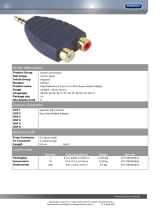
Performing Cross-OS File Exchange Operations....................................... 5-1
Performing File Transfer Operations - UNIX.........................................................5-3
Starting the FCU GUI for UNIX.....................................................................5-3
Performing File Transfer Operations (UNIX)..................................................5-6
Using the listvol Function (UNIX)............................................................5-8
Creating FCU Parameter Definition Files (UNIX).............................................5-9
Creating Multiple Volume Definition Files (UNIX) .........................................5-10
Using FCU from the Command Line (UNIX).................................................5-12
Performing File Transfer Operations – Windows.................................................5-17
Starting the FCU GUI ................................................................................5-17
Performing File Transfer Operations (Windows)...........................................5-19
Creating FCU Parameter Definition Files (Windows).....................................5-23
Creating Multiple Volume Definition Files (Windows)....................................5-25
Using FCU from the Command Line (Windows) ...........................................5-27
Performing File Access Library (FAL) Operations ..................................... 6-1
FAL Requirements.............................................................................................6-2
FAL Functions...................................................................................................6-3
Converting Dataset Attribute Information .....................................................6-3
Opening a Dataset......................................................................................6-4
Reading Data .............................................................................................6-5
Writing Data...............................................................................................6-6
Closing a Dataset........................................................................................6-7
Acquiring Error Information.........................................................................6-7
Acquiring Dataset Attributes........................................................................6-8
Acquiring Attribute Information for a Specific Dataset .............................6-8
Acquiring Attribute Information for Multiple Datasets ..............................6-9
Converting DO and RF Information ............................................................6-12
Converting the Dataset Organization (DO) Type Value ..........................6-12
Converting the Record Format (RF) Type Value....................................6-12
Using the FAL Functions ..................................................................................6-14
Multi-Thread Function......................................................................................6-18
Information Storage Area..........................................................................6-19
Open Dataset...........................................................................................6-20
Read Data................................................................................................6-22
Write Data ...............................................................................................6-23
Close Dataset...........................................................................................6-24
Free Information Stored Area ....................................................................6-25
Initialize Target Record Pointer..................................................................6-26
Get Dataset Attribute Information..............................................................6-27
Get Specified Dataset Attribute Information..........................................6-27
Get Multiple Dataset Attribute Information...........................................6-28
Compiling.......................................................................................................6-31
Error Information............................................................................................6-32




















